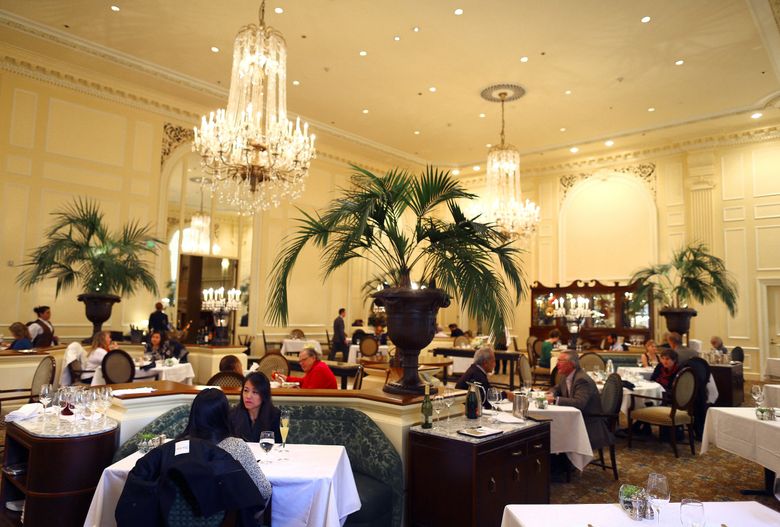Savor Authentic Asian Food With a Pan-Asian Spin for a Cooking Adventure
Beginning on a cooking trip with authentic Asian cuisine, improved with a Pan-Asian spin, offers a distinct possibility to explore the rich tapestry of tastes that specify the area's diverse culinary traditions. This experience invites you to enjoy the exquisite balance of tastes-- sweet, salty, spicy, and sour-- harmonized by fragrant natural herbs and seasonings. Visualize the cutting-edge blend of Thai curry and ramen or the unexpected joy of sushi burritos. As you ponder these luring meals, think about the cultural narratives and historic impacts that shape them, each bite offering a tale waiting to be uncovered.

Discovering Pan-Asian Flavors
In the world of worldwide gastronomy, Pan-Asian food sticks out for its amazing diversity and the unified interplay of tastes from various Eastern societies. This culinary technique celebrates the rich practices and unique active ingredients found across the continent, developing a tapestry of tastes that is both fascinating and rewarding. Trick to Pan-Asian food is its ability to stabilize different tastes-- sweet, salty, spicy, and sour-- while highlighting the quality and top quality of each ingredient.
From the umami-rich soy sauce of Japan to the fiery chili peppers of Thailand, Pan-Asian food supplies a considerable combination of tastes. These components are typically combined in innovative means, enhancing meals with layers of complexity. As an example, using fragrant herbs such as lemongrass and cilantro, usual in Vietnamese and Thai food, adds a rejuvenating illumination to dishes, while the incorporation of coconut milk provides a luscious, rich appearance.
The emphasis on fresh produce and aromatic spices makes sure that each dish is not just a banquet for the preference buds yet also for the senses. Pan-Asian cuisine welcomes restaurants to start a culinary trip, exploring the substantial and varied landscapes of Eastern gastronomy with every bite.
Fusion Meals to Try
While Pan-Asian food is commemorated for its standard flavors, the modern-day culinary landscape is significantly accepting blend meals that mix these traditional components with influences from various other regions. This cutting-edge technique not just honors the rich heritage of Eastern cooking arts however additionally introduces unique taste experiences that attract contemporary tastes buds.
An archetype of such a fusion meal is the Korean-Mexican taco, where seasoned bulgogi beef is wrapped in a cozy tortilla, covered with kimchi and a spicy gochujang-infused salsa. This mix weds the bold, full-flavored flavors of Korea with the vivid, fresh elements of Mexican food. In a similar way, sushi burritos have actually obtained appeal, amalgamating the delicate virtuosity of Japanese sushi with the passionate, hand-held benefit of a burrito, frequently including blend ingredients like tempura shrimp and avocado with a drizzle of wasabi mayo.
One more significant recipe is Thai curry ramen, which infuses the creamy, aromatic flavors of Thai curry right into the comforting brew of typical Japanese ramen, producing an unified mix that entices the detects. These fusion dishes prolong beyond mere uniqueness; they stand for a culinary dialogue in between cultures, motivating expedition and development on the planet of Pan-Asian food.
Crucial Ingredients and Flavors
To genuinely value Pan-Asian food, one have to understand the important components and seasonings that create its structure. This varied cooking style attracts from an abundant tapestry of Eastern traditions, employing a harmonious blend of flavors and structures. Trick components consist of soy sauce, fish sauce, and oyster sauce, which give a tasty umami depth vital to Oriental meals. Corresponding to these are rice vinegar and mirin, providing a delicate acidity and sweet taste.
Aromatic components are crucial, with lemongrass, ginger, and garlic being ubiquitous across numerous Pan-Asian recipes. These active ingredients supply an aromatic base that enhances the intricacy of flavors. Flavors such as star anise, cardamom, and cinnamon present warmth and character, resembling influences from areas like China and India.

Cooking Strategies and Tips
Understanding the art of Pan-Asian cuisine needs knowledge with its distinctive cooking strategies, each adding to the dynamic tapestry of flavors this culinary practice is commemorated for. Central to these methods is the stir-fry, a fast food preparation method that maintains the nutritional integrity and brilliant shades of ingredients. Utilizing a wok, the stir-fry technique enables also warmth circulation, vital for attaining the particular texture and flavor balance of Pan-Asian dishes.
One more fundamental method is steaming, specifically prevalent in Chinese cuisine. This gentle method preserves the all-natural flavors and nutrients of ingredients, making it optimal for fish and shellfish and veggies. Dumplings, a cherished staple, commonly gain from steaming, resulting in soft, delicious structures.
Cooking, additionally indispensable, passes on great smoky depths to meals such as Korean bulgogi or Japanese yakitori (pan asian restaurant Islamabad). This strategy often entails marinading ingredients, permitting tastes to permeate deeply before cooking over an you could try this out open flame or warmer
Last but not least, understanding the art of balancing flavors-- pleasant, sour, salted, bitter, and umami-- is crucial. Effectively layering these aspects can boost a dish from normal to remarkable, offering a complicated and pleasing cooking experience that embodies the significance of Pan-Asian food.
Dining Experiences Worldwide
Across the world, Pan-Asian cuisine supplies an exceptional dining experience, commemorated for its rich tapestry of tastes and dynamic discussions. This cooking phenomenon has actually transcended social boundaries, recording the hearts and palates of food enthusiasts worldwide. In multicultural cities like see page New York, London, and Sydney, Pan-Asian dining establishments offer as melting pots where culinary traditions from Thailand, Japan, China, and beyond merge, supplying restaurants with a diverse mix of recipes that highlight the region's diversity.
The global charm of Pan-Asian cuisine hinges on its ability to use both credibility and advancement. Cooks masterfully wed standard components such as lemongrass, soy sauce, and miso with contemporary techniques, resulting in meals that are both refreshingly new and familiar. This combination allows restaurants to start a cooking journey that appreciates heritage while accepting modernity.
In addition, eating experiences are boosted via attentively designed environments that show the values of Pan-Asian visual appeals. From minimalist Japanese-inspired interiors to dynamic Thai-themed areas, each dining establishment supplies an unique ambiance that complements the cooking offerings. As an outcome, patrons are not merely consuming a meal however partaking in a social experience, making Pan-Asian eating a really international phenomenon.
Conclusion
The expedition of Pan-Asian food provides an extensive understanding of the detailed interplay of flavors and cooking traditions across Asia. By welcoming blend recipes such as Thai curry ramen and sushi burritos, the cooking trip not just highlights the versatility page of traditional ingredients however also showcases innovative modern-day techniques. This gastronomic journey, enhanced by important seasonings and cooking techniques, provides an unique possibility to appreciate the cultural variety and cooking creativity that define Pan-Asian cuisine on an international range.
Getting started on a cooking journey with genuine Asian food, enhanced with a Pan-Asian twist, uses an unique possibility to discover the rich tapestry of tastes that specify the area's varied cooking customs.In the world of worldwide gastronomy, Pan-Asian food stands out for its exceptional diversity and the unified interaction of flavors from different Asian societies. Key to Pan-Asian cuisine is its capacity to balance different flavors-- pleasant, salted, spicy, and sour-- while highlighting the quality and quality of each ingredient.
